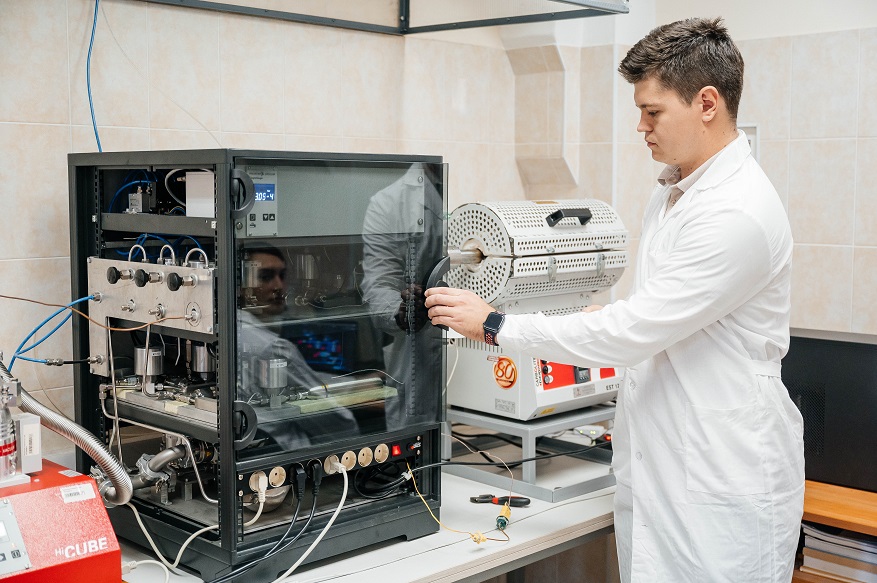Specialists of the School of Nuclear Science and Engineering at Tomsk Polytechnic University have developed an automated complex for studying hydrogen sorption and desorption. It is designed for research aimed at creating hydrogen storage materials. The uniqueness of the complex lies in the fact that it allows conducting studies in a wide range of pressures and temperatures. The development was supported by the Priority-2030 program of the Ministry of Education and Science. It is presented at the St. Petersburg International Gas Forum, which is taking place these days in St. Petersburg.
The complex for studying hydrogen sorption and desorption is a project of specialists from the Division for Experimental Physics of the School of Nuclear Science and Engineering. One of their tasks is to create technologies for the production of new functional materials for the needs of hydrogen energy, as well as methods of production, storage and transportation of hydrogen. The facility developed by the US scientists is an important tool for creating new types of storage materials that allow safe storage of hydrogen.
New materials need to be thoroughly investigated to understand how and under what conditions they can be exploited. In particular, it is important to determine their sorption properties, i.e. the degree of hydrogen absorption and kinetic features of interaction with it. Our complex can also be used to study the resistance and permeability of structural and membrane materials. Studies can be conducted at pressures up to 350 atmospheres, in a wide range of temperatures and with the possibility of forming research cycles of tests, - Andrey Lider, Head of the Division for Experimental Physics.
The software of the complex allows to determine the hydrogen sorption and desorption characteristics of various materials with high accuracy.
Among the key characteristics of the unit are a high degree of automation and high metrological characteristics. Thanks to this, it can be used to solve a wide range of material science problems in the field of hydrogen energy. The unit can be used to study and test materials intended for the creation of hydrogen infrastructure. Another possible application is the study of membrane materials for the separation of hydrogen from gas mixtures and the preparation of high purity hydrogen.




